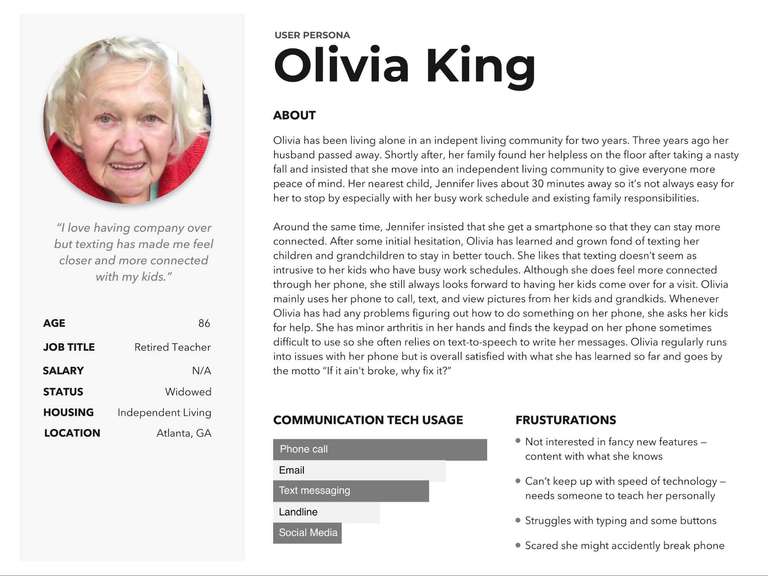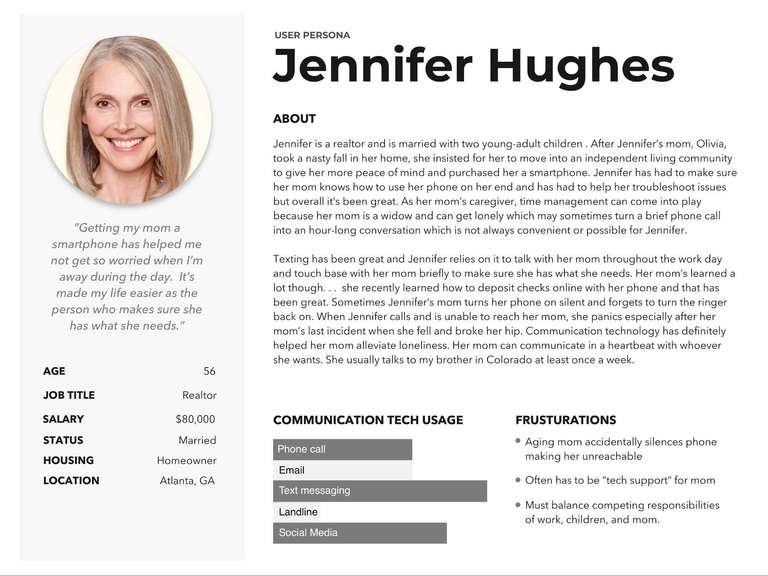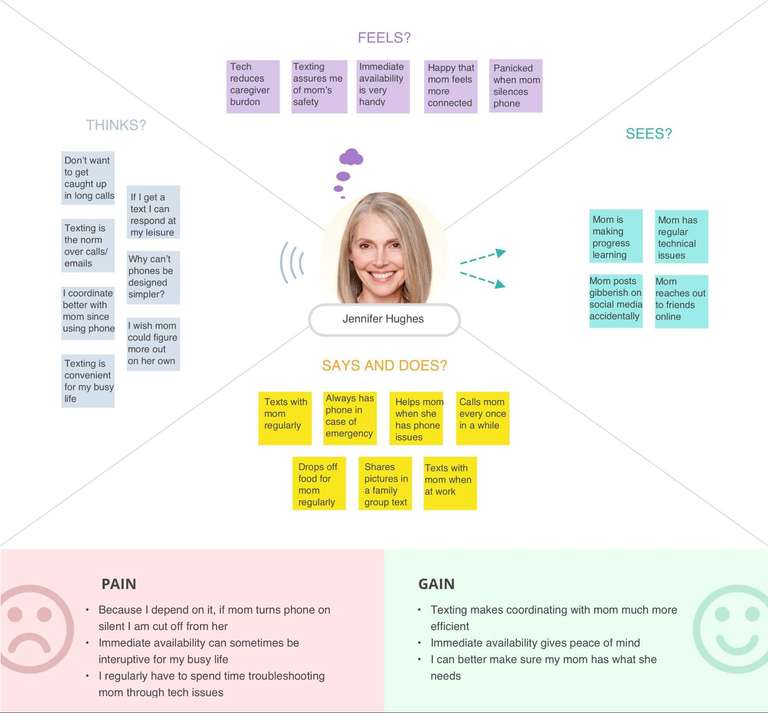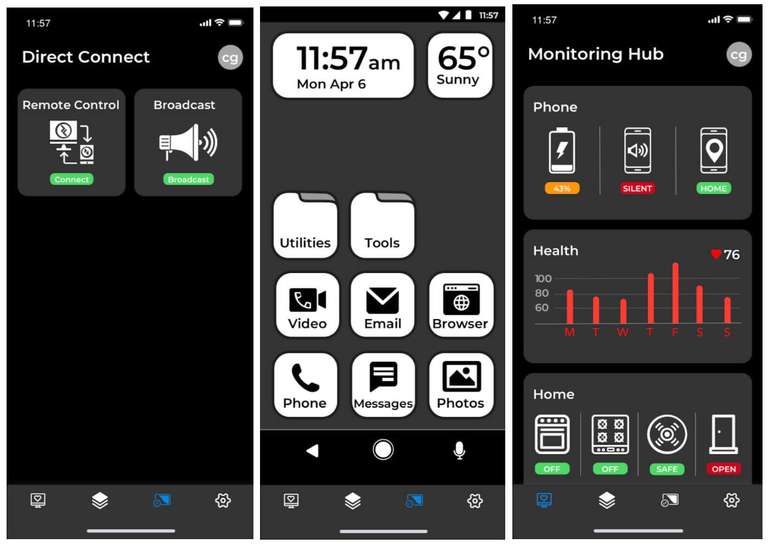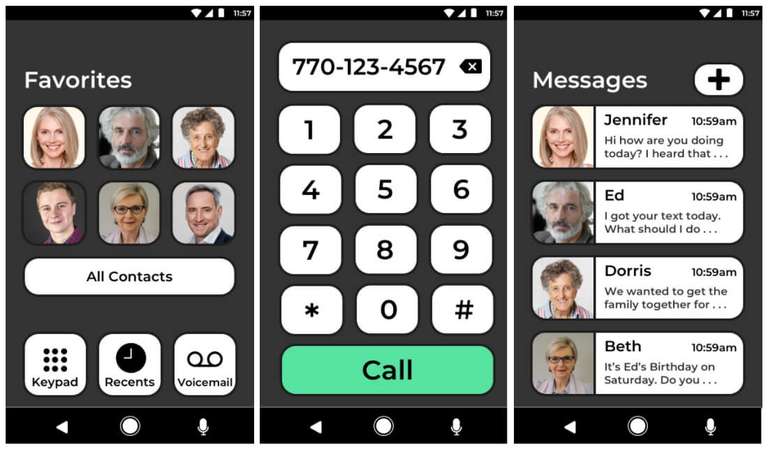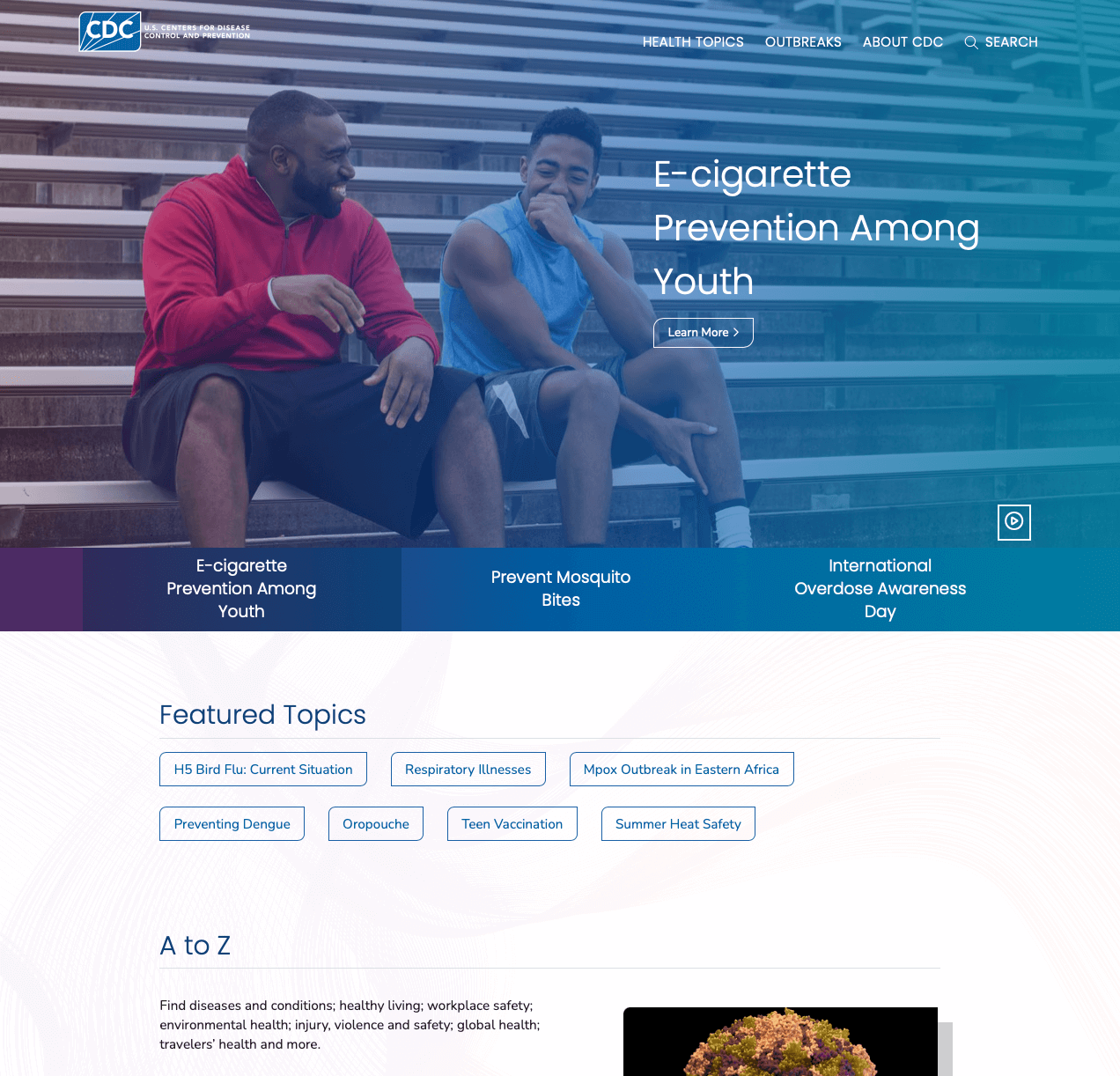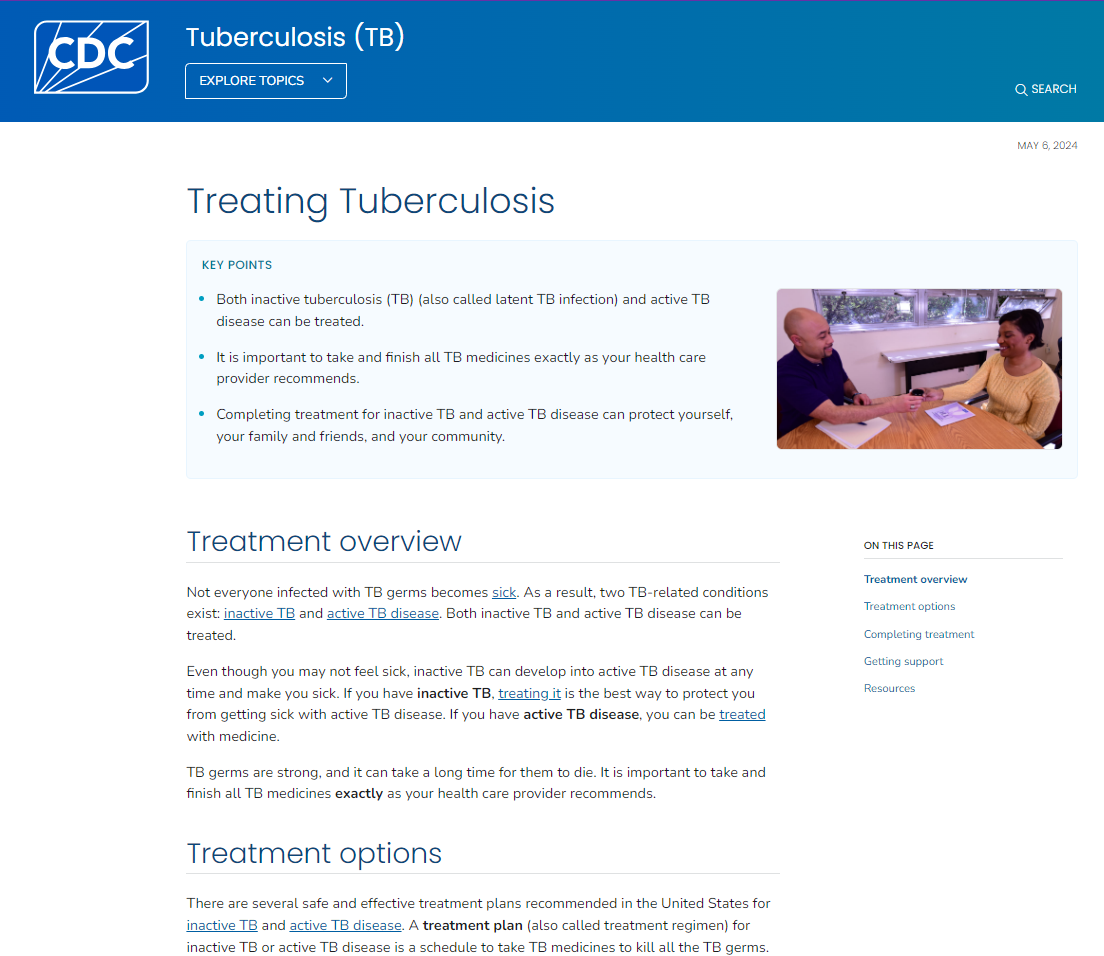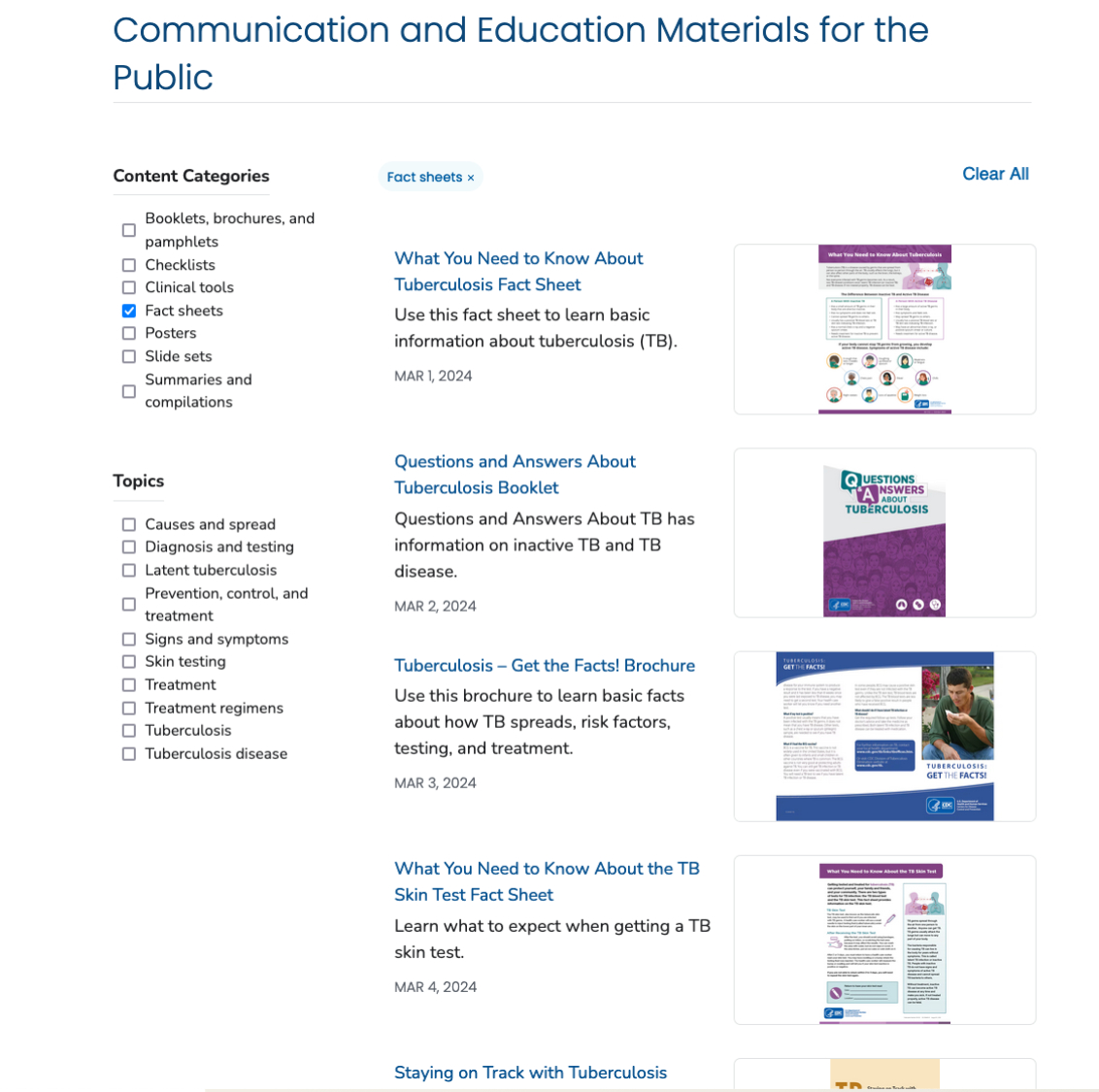Tech for aging in place
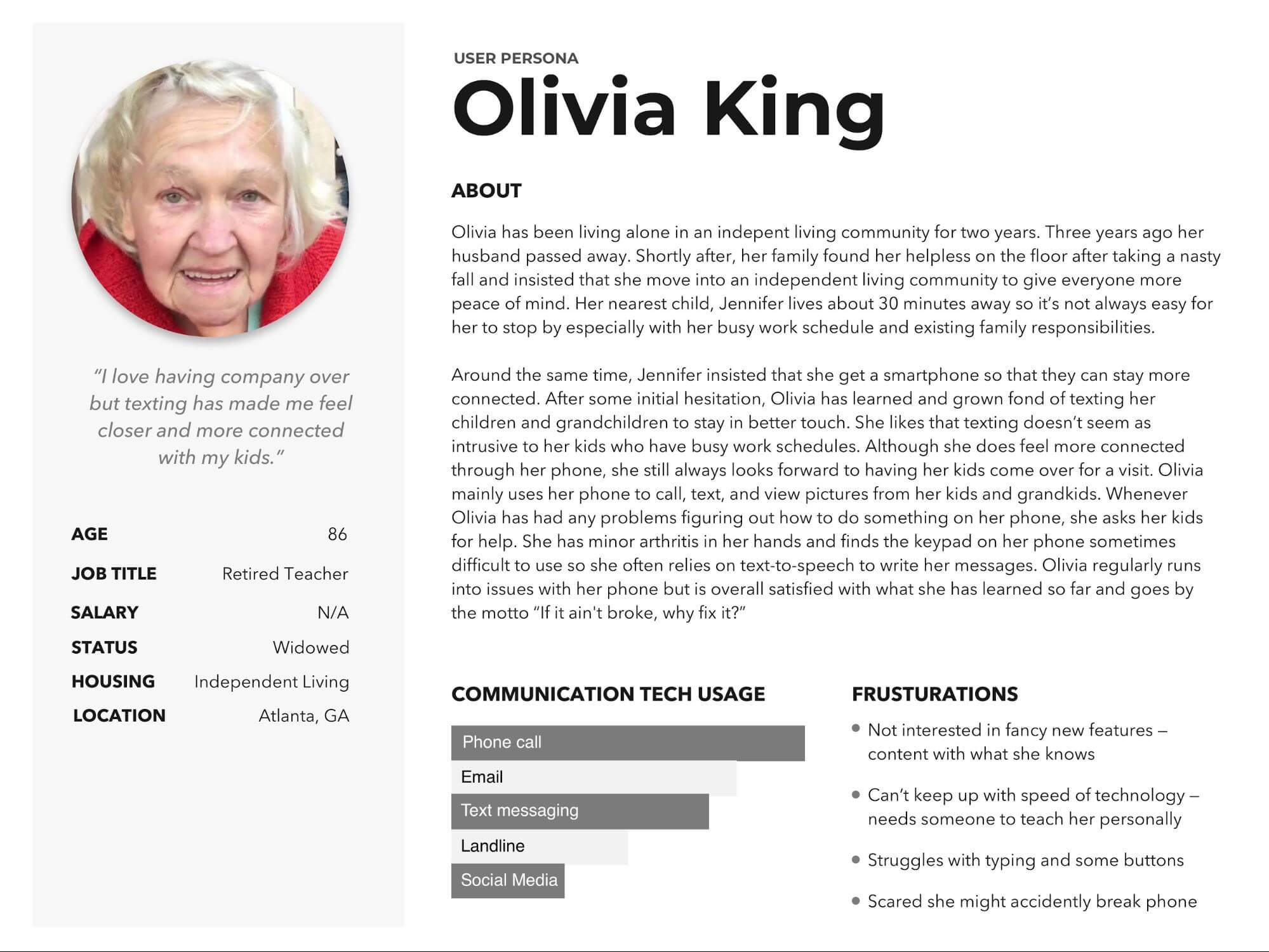
The problem
Older adults are increasingly opting to remain in their homes and communities as they age. They often have family or close friends who watch after them in varying capacities. The number of caregivers per older adult is decreasing due to social and demographic shifts which puts increased pressure on existing caregivers. Caring for an aging loved one can place a significant burden on caregivers who often times have have additional professional and personal responsibilities. This project explored the potential for leveraging technology to lessen the burden on caregivers while improving the quality of life for older adults.
What I accomplished
- Developed unique research methodology involving surveying and interviewing to explore the relationship and needs between an interconnected pair of users: caregivers and care receivers.
- Developed personas and empathy maps for each user group after analyzing
across 18 surveys and interviews. - Using design criteria extracted from research insights, designed mobile-based experiences for each user within a pair: Family OS software for care receivers and a companion application for caregivers that is platform agnostic.
- Evaluated both prototypes with their respectives users through task-based usability tests, desirability testing, and System Usability Scale (SUS)
Personas & empathy maps
Takeaways
- The relationship between caregivers and care receivers is highly complex.
- Prototype provides greater peace of mind to caregivers.
- Prototype provides convenient and efficient way to mediate technical assistance.
- Prototype empowers care receivers and promotes autonomy and independence.
The relationship between caregivers and care receivers is highly complex and sensitive
When considering tools that assist caregivers, it is important to focus on those that feel collaborative rather than on those that solely monitor care receivers. While monitoring certainly has value, a heavy reliance on monitoring, which is often discussed within the field of Human Computer Interaction (HCI) as a promising solution to enable older adults to age in place, is one-sided and may make older adults feel patronized and/ or neglected. A caregiver role is often not a professional arrangement — there is a delicate balance that must be preserved between caregiving and the reciprocity found in any healthy, adult relationship. Strongly supported through my research, care receivers do not see technology as a substitute for in-person communication— they see it as “better than nothing.” It is important to be keenly aware of technology's limitations and consider it as a supplement, not foundational to a caregiver/ care receiver relationship.
Technology has value in the efficiency of the conversation but it doesn't have the same interpersonal reaction as as a personal conversation would... it's more efficient and and I can see that, but the human interaction piece of it is missing.
— care receiver —
Prototype provides greater peace of mind to caregivers
Although there are privacy concerns for this system within the general population,
these concerns are not as relevant within the caregiver/ care receiver relationship.
Privacy goes out the window for both parties, for both the caregiver and
care receiver, privacy is the least of their concern… I can’t emphasize that enough. Privacy is not an issue for a parent whose child is helping them. My mom is so glad that she doesn’t have to worry about all her finances and medical care. That’s just how it is.
— care giver —
Caregivers felt that the application striked a good balance in providing visibility and connectedness with the care receiver while also respecting their autonomy and personal privacy. For example, caregivers are able to remotely check in on their health, view/ manage their care receiver's settings, and manage technical issues by requesting screen control.
I do think it's good that you can’t see their messages or calls so it doesn’t feel so much like a nanny state or feel like they are being spied on. It makes them feel like they are still living on their own but is just making it easier for caregivers.
— care giver —
Prototype provides convenient and efficient way to mediate technical assistance
It’s a good thing that you are able to check on an older person's settings
because occasionally something happens to their settings that they aren’t aware of.
— care giver —
It’s difficult to communicate if you are not right there sitting with her. My mom has a little bit of a hearing problem. With this you can just step in remotely or show her. I would say that's very valuable.
— care giver —
Prototype empowers care receivers and promotes autonomy & independence
As a caregiver you are not physically needed all the time and as a care receiver you can get assistance more quickly if you need it and you will probably have more of a sense of independence too that you can do whatever you’re trying to do when you want. You don't feel frustrated feeling dependent on another person.
— care giver —
Final prototype
